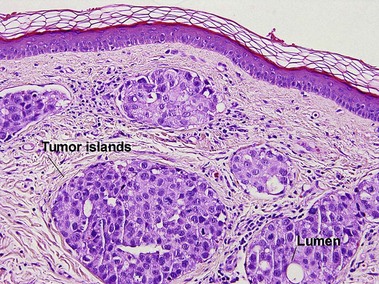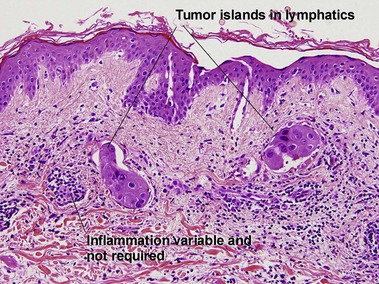Metastatic tumors and simulators
Breast carcinoma
Breast carcinoma is the most common cause of cutaneous metastatic disease in women. In general, metastases are seen on the chest wall, sometimes as a result of direct extension of the tumor. Various clinical and histologic presentations are possible. Distinct subtypes are discussed below.
Carcinoma en cuirasse
A cuirasse is a suit of armor made of leather. Carcinoma en cuirasse presents with woody induration of the skin. The skin is infiltrated by single files of hyperchromatic nuclei with prominent nuclear molding. Dense collagen is laid down between the tumor cells. Because the dermis is sclerotic, the punch is rectangular rather than tapered.
Inflammatory carcinoma (carcinoma erysipeloides)
Clinically, the lesions present with skin erythema that ranges from faint macular erythema to an erysipelas-like presentation. Inflammation is usually absent histologically, and the erythema is likely secondary to blood vessel congestion.










